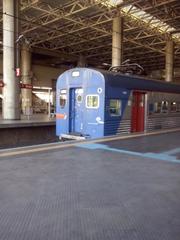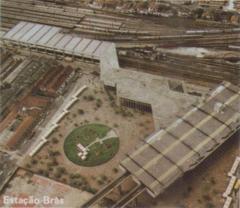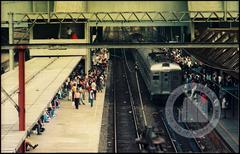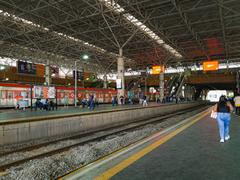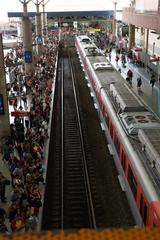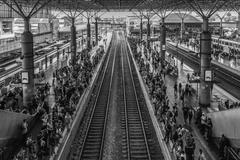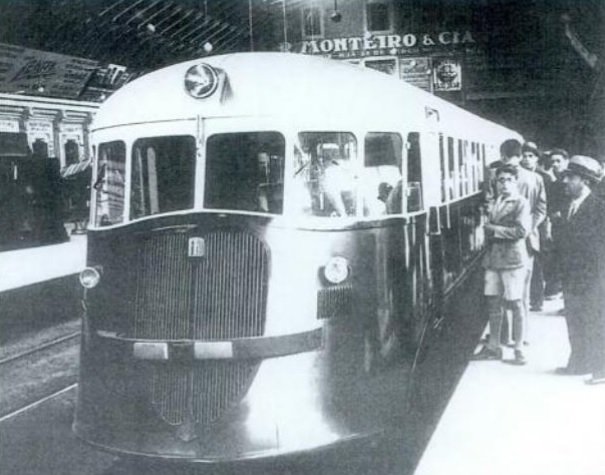
Brás São Paulo Brazil: Visiting Hours, Tickets, and Historical Sites Guide
Date: 14/06/2025
Introduction: History, Cultural Significance, and Visitor Overview
Brás is one of São Paulo’s most dynamic and historically significant neighborhoods, reflecting the city’s evolution from farmland to industrial powerhouse and cultural melting pot. Established in the 18th century and named after the Portuguese landowner José Brás, the district began as a rural settlement. The arrival of the Brás railway station in 1867 transformed the area, sparking industrial growth and attracting waves of immigrants—primarily Italians, but also Middle Eastern, Korean, and Bolivian communities. These groups shaped Brás’s multicultural heritage, visible today in its vibrant markets, diverse cuisine, and lively festivals.
Modern Brás stands as Brazil’s leading fashion and textile hub. Its bustling markets, such as the Feirinha da Madrugada, and historic sites like the Immigration Museum (housed in the former Hospedaria de Imigrantes), draw visitors seeking authentic cultural experiences. The neighborhood’s accessibility by subway and train, coupled with its energetic atmosphere, makes Brás a must-visit destination for travelers interested in history, shopping, and São Paulo’s unique urban culture. This comprehensive guide offers essential details on visiting hours, tickets, safety, and the best sites to explore (saopaulosecreto.com, World of History, Gazeta de S.Paulo, TravelRight).
Discover Brás: Historic Roots and Modern Vibrancy
Founding and Growth
Brás’s origins trace to 1769, marked by the construction of the Bom Jesus de Matosinhos chapel by José Brás. The district’s transformation began in the late 19th century with the opening of the Brás railway station, which fueled industrialization and drew immigrants, especially Italians, seeking new opportunities (saopaulosecreto.com, britannica.com).
The Hospedaria de Imigrantes and Immigration Museum
The Hospedaria de Imigrantes, inaugurated in 1887, served as a reception center for millions of newcomers. Today, it houses the Immigration Museum, which documents the journeys and contributions of São Paulo’s diverse communities (audiala.com).
Key Attractions and Visitor Information
Immigration Museum (Museu da Imigração)
- Hours: Tuesday–Sunday, 9:30 AM–5:30 PM
- Tickets: Free for children under 12 and seniors over 65; standard admission ~BRL 10
- Accessibility: Wheelchair accessible
- Highlights: Immigrant stories, interactive exhibits, historical artifacts
- Address: Rua Visconde de Parnaíba, 1316
Good Jesus of Brás Parish (Paróquia Bom Jesus de Brás)
- Hours: Monday–Saturday, 7:00 AM–7:00 PM; Sunday services at 8:00 AM, 10:00 AM, 6:00 PM
- Admission: Free
- Highlights: Historic architecture, religious services, nearby Ficazzella Bar with Italian cuisine
- Address: Avenida Rangel Pestana, 230
Feirinha da Madrugada Market
- Hours: Nightly, 10:00 PM–6:00 AM
- What to Expect: Hundreds of stalls with affordable textiles and clothing
- Tips: Visit late at night or early morning; bring cash; watch personal belongings
- Location: Near Brás railway station
Getting to Brás
Brás is easily accessible via São Paulo’s metro and train systems (Brás Station) and is a major transportation hub connecting the city and the port of Santos.
Cultural Highlights and Events
Brás’s multicultural heritage is celebrated through events like the Festa de San Gennaro, an Italian festival featuring traditional food and music. The neighborhood’s diverse communities enrich local cuisine and festivities, making each visit a cultural exploration.
Visitor Tips
- Footwear: Wear comfortable shoes for walking.
- Museum Visits: Weekdays are less crowded.
- Local Cuisine: Sample Italian dishes at Ficazzella Bar.
- Market Experience: For the full Feirinha da Madrugada experience, visit late at night.
Brás FAQ
Q: When is the best time to visit Brás?
A: Weekdays for museums and churches; nighttime or early morning for the Feirinha da Madrugada.
Q: Is the Immigration Museum family-friendly?
A: Yes, with interactive exhibits for all ages.
Q: Are guided tours available?
A: Yes, through local agencies and visitor centers.
Q: Is Brás safe?
A: Generally safe during the day; exercise caution at night, especially in crowded areas.
Exploring Brás: Shopping, Culture, and Urban Life
Historical and Urban Evolution
Brás emerged as a working-class district in the late 19th century, shaped by waves of European, Middle Eastern, and Asian immigrants. Its location near railway lines and the Tietê River spurred growth, making it a textile and commercial powerhouse (World of History, Riotimes Online).
Fashion and Textile Industry
Home to Brazil’s largest fashion district, Brás features hundreds of wholesale and retail outlets along Rua Miller, Rua Maria Marcolina, and Rua Xavantes. The district generates substantial economic activity and employment (UNWTO Facts & Figures).
Shopping Experience
Shoppers flock to Brás for bargains and the energetic market atmosphere. Street vendors and bakeries add local flavor, making shopping a cultural event.
Multicultural Heritage
Festivals like Festa de San Vito and the presence of historic churches (e.g., Igreja de São Vito) highlight Brás’s Italian roots, while Middle Eastern and Asian influences are evident in local cuisine.
Urban Challenges
Brás faces challenges such as congestion and safety concerns during peak shopping hours. Urban revitalization and increased police presence aim to address these issues (TravelRight).
Nearby Attractions and Photographic Spots
Explore sites like Mercado Municipal de São Paulo and the Museum of the Portuguese Language. Early mornings offer the best light for photographing street markets and historic buildings.
Practical Visitor Tips
- Best Shopping Hours: Weekdays, 6:00–10:00 AM
- Transport: Use metro/train; avoid driving
- Safety: Keep valuables secure; stick to busy areas
- Dining: Try local bakeries and multicultural food stalls
The Brás Experience: Culture, Gastronomy, and Festivities
Fashion Capital
Rua Oriente and Rua Miller are lined with stores, many open as early as 4:00 AM. Bargaining is common, especially for bulk purchases.
Gastronomic Diversity
Enjoy Italian cantinas, Northeastern Brazilian dishes, bakeries, and pastelarias. Street food is especially vibrant during festivals.
Carnival and Cultural Events
Brás is home to samba schools like Colorado do Brás, which in 2025 honored the Bahian afoxé group Filhos de Gandhy (Gazeta de S.Paulo). The district hosts parades, processions, and year-round cultural events.
Street Life
Open-air markets and street art, especially murals, add to Brás’s urban energy.
Safety and Navigation
Brás is generally safe during the day but stay alert for pickpocketing in crowded areas. Travel in groups if possible, and use public transportation (The Broke Backpacker).
Guided Tours and Photography
Book walking tours through local agencies to explore industrial heritage and street art. Early market hours and mural sites are excellent for photography.
Visitor FAQ
- Market Hours: Most open 4:00 AM–7:00 PM; Mercado Municipal do Brás, 6:00 AM–6:00 PM Monday–Saturday.
- Tickets: Most sites are free; Carnival events require tickets.
- Safety: Safe during the day with precautions; avoid isolated areas at night.
- Event Tickets: Available online and at official venues.
São Paulo Cathedral: History, Tickets, and Tips
History and Architecture
The Catedral da Sé, started in 1913 and completed in 1967, is São Paulo’s largest Neo-Gothic cathedral and the seat of the city’s archdiocese.
Visitor Information
- Hours: 7:00 AM–7:00 PM daily
- Admission: Free; guided tours available for a fee
- Getting There: Metro Sé station is directly underneath Praça da Sé
- Accessibility: Wheelchair-friendly, with some limitations
Nearby Attractions
- Pátio do Colégio: Historic founding site of São Paulo
- Municipal Market: Local foods and crafts
- Banespão Building: Panoramic city views
Final Visitor Tips and Summary
Brás captures the essence of São Paulo’s multicultural vibrancy—its industrial past, thriving textile markets, and diverse communities. From the Immigration Museum to lively festivals and bustling markets, Brás offers travelers an authentic experience. For safe and enjoyable visits, use public transport, travel in groups where possible, and explore during daylight hours. Download the Audiala app for travel tips, event updates, and guided tours (Audiala, saopaulosecreto.com, Gazeta de S.Paulo, TravelRight).
Image and Interactive Media Suggestions
- Exterior and interior shots of the Immigration Museum and São Paulo Cathedral
- Street scenes of Rua Oriente and Feirinha da Madrugada
- Mural art and market crowds
- Interactive map highlighting Brás’s main attractions
References
- Exploring Brás, São Paulo: History, Visitor Info, and Cultural Attractions (saopaulosecreto.com)
- Exploring Brás in São Paulo: Visiting Hours, Shopping, and Cultural Highlights (World of History)
- Brás São Paulo: Visiting Hours, Shopping, and Cultural Highlights (Gazeta de S.Paulo)
- Exploring Brás in São Paulo: Visiting Hours, Shopping, and Cultural Highlights (TravelRight)
- Exploring Brás in São Paulo: Visiting Hours, Shopping, and Cultural Highlights (TravelPander)

